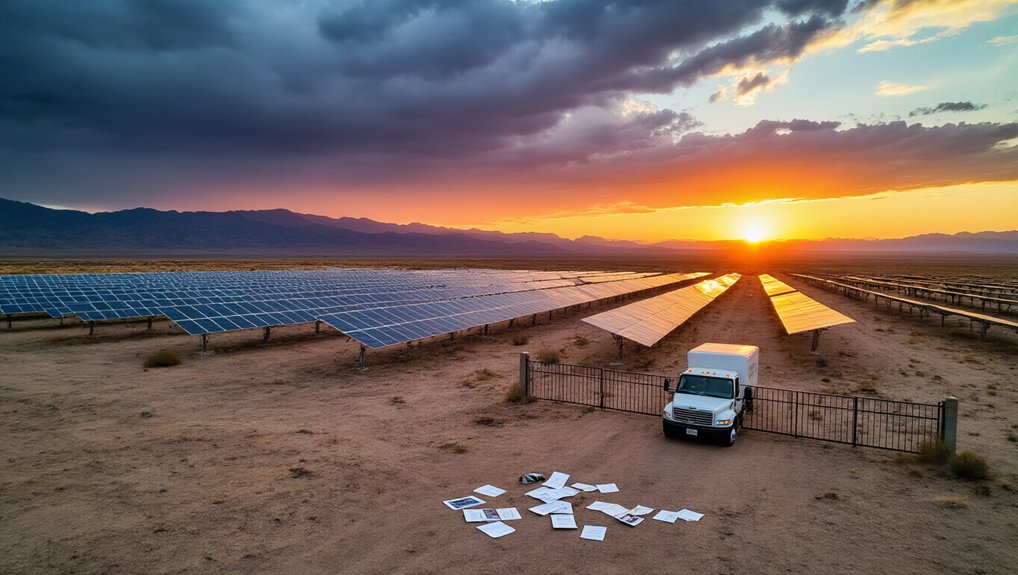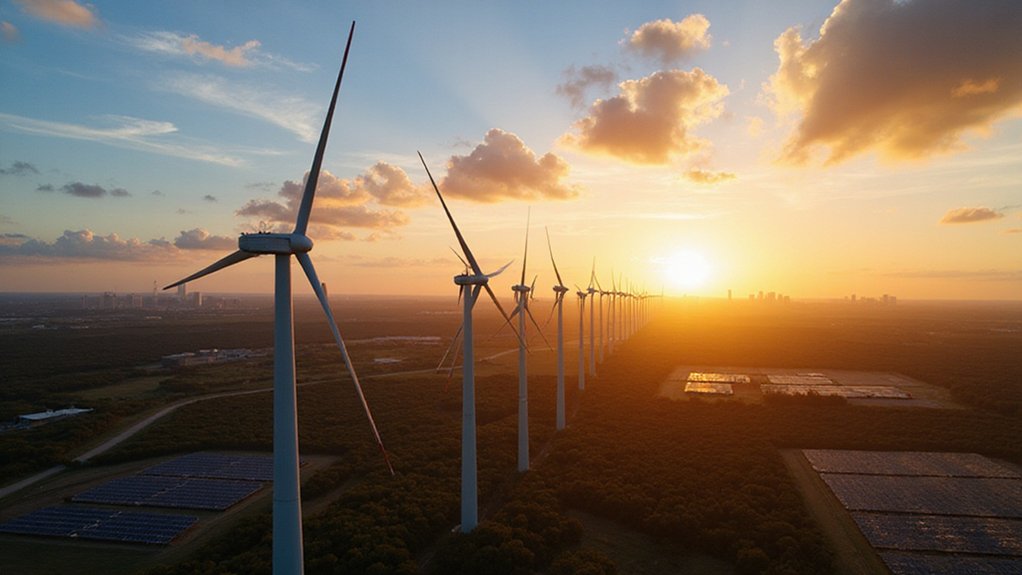While other states race ahead with wind farms and solar fields, Wisconsin’s been playing catch-up in the renewable energy game. But something big just happened. The Paris Solar-Battery Park in Kenosha County fired up, marking the state’s first large-scale energy storage project to actually start powering homes and businesses.
Wisconsin finally joins the renewable energy race with its first major battery storage project
This isn’t some tiny experiment. We’re talking 200 megawatts of solar panels paired with 110 megawatts of battery storage. Translation: enough juice to power 130,000 homes for four hours straight, even when the sun’s not shining. Finally, Wisconsin’s getting serious about this whole clean energy thing.
The state’s been busy lately. Darien Solar Energy Center‘s bringing 250 megawatts of solar and 75 megawatts of battery power to Rock and Walworth counties, though you’ll have to wait until 2025 for the solar part and 2026 for the batteries.
Badger Hollow Solar Park already delivered 300 megawatts across two phases, earning itself a spot on RENEW Wisconsin’s Clean Energy Honor Roll. Not bad for a state that’s been dragging its feet.
Two Creeks Solar Park actually started this whole movement back in November 2020, becoming Wisconsin’s first large-scale solar project with 150 megawatts. Now everyone wants in. The Sunnyside Solar Energy Center’s working through approvals, and more projects keep popping up. Even smaller distributed energy sites like Hodag Solar are connecting 7.5 megawatts directly to local distribution lines.
Here’s what matters: jobs. Real jobs for real people, both blue-collar workers building these massive installations and white-collar folks managing them. Local companies are getting contracts. Money’s flowing into small towns. Businesses looking to recruit talent actually have clean energy to brag about now.
The battery storage part? That’s the game changer. Solar panels are great until clouds roll in or night falls. Batteries fix that problem, storing excess power for when people actually need it. Peak demand periods? Covered. Grid reliability? Getting better.
Wisconsin needed regulatory reform to make this happen, and apparently someone finally listened. Streamlined permitting, better frameworks, actual cooperation between state agencies and utilities. Who knew that’s all it took?
The energy transformation‘s here. Wisconsin just needed to wake up first. With the renewable energy market projected to grow to over $600 billion by 2030, the state is finally positioning itself to capture a piece of this economic opportunity.
References
- https://www.renewableenergyworld.com/energy-storage/battery/wisconsins-first-large-scale-energy-storage-project-is-now-online/
- https://www.wecenergygroup.com/environment/solar-battery-projects.htm
- https://www.wpr.org/news/clean-energy-projects-roundup-2024-2025-paris-solar-park-wisconsin-alliant
- https://psc.wi.gov/Pages/CommissionActions/CasePages/SunnysideSolar.aspx
- https://www.nature.org/en-us/about-us/where-we-work/united-states/wisconsin/stories-in-wisconsin/renewable-energy-transition/









